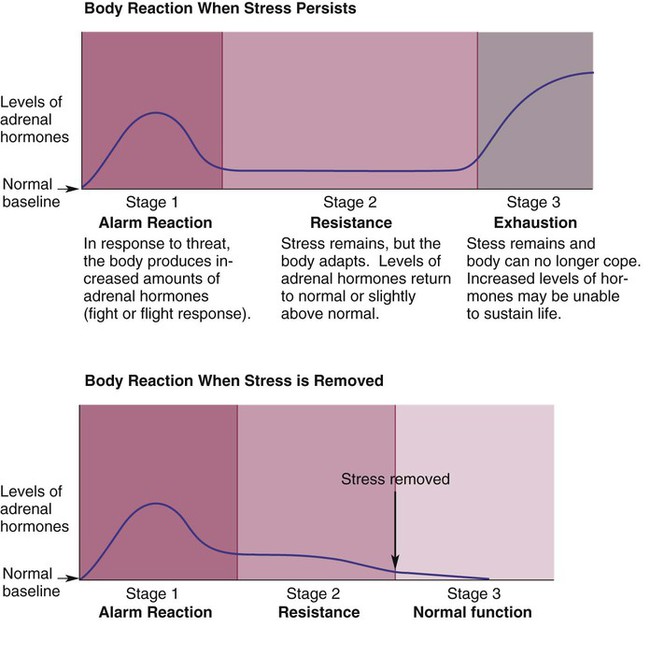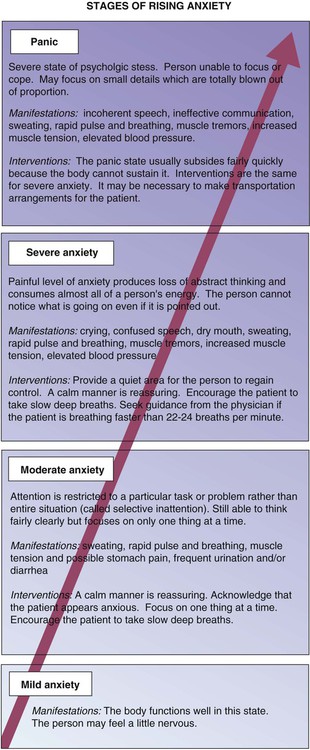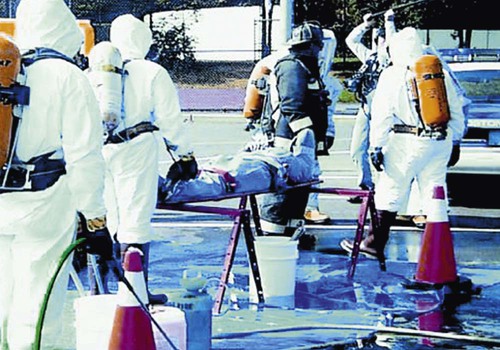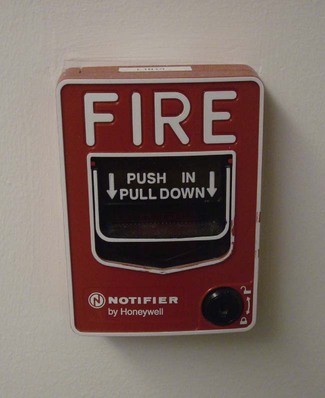As with natural events, the amount of threat or damage from man-made hazards can vary considerably; examples include a fire in a wastebasket that is quickly contained, a gunman threatening to injure all the employees of an office, a bomb threat, and a radiation incident that may involve an entire city or area. Man-made hazards include crime, many fires, terrorism, industrial hazards, structural collapse, power outage, radiation hazards, and chemical contamination. Municipal fire departments and police departments provide rapid assistance for fires, injury, and criminal activity, and the National Response Center of the Environmental Protection Agency responds to the release, or potential release, of oil, radioactive materials, or hazardous chemicals into the air, land, or water (Figure 49-1). • Pose a serious threat to personal safety or have unknown health effects (such as the tsunami in Japan in 2011 or the damage from Hurricane Katrina) • Have an uncertain duration (such as serious floods of major rivers) • Result from malicious intent or human error Stress is the body’s response to threat or change. Hans Selye, an Austrian doctor who practiced in the middle of the twentieth century, described the body’s reaction to stress as a four-part general adaptation syndrome (GAS), also known as the fight or flight response, which is shown in Figure 49-2. The four stages of the GAS are the alarm reaction, the stage of resistance, the recovery phase, and the stage of exhaustion. Severe anxiety can be medically problematic. In an emergency situation it tends to immobilize an individual and stimulate anxiety in others. Symptoms of a full-blown anxiety attack include the following. An overly anxious person hyperventilates, has an extremely rapid heart rate, and becomes unresponsive. When there is an emergency, many people lose control of their emotions and cry or scream. The behavior can be minimized by giving the highly anxious person directions. It may be necessary to touch the person to gain his or her attention, and then directions should be given in short sentences, speaking a little more slowly than usual. Helping the person to breathe deeply will help reduce anxiety, but it is also important to direct the person exactly where to go if a dangerous area must be evacuated or if the person should take cover. Figure 49-3 shows the various stages of increasing anxiety. In a large office or freestanding clinic, there may be fire doors at certain points in corridors. These doors are designed to contain any fire on one side of the door from going into another area of the building. Fire doors should never be propped open but should be allowed to shut to their naturally closed position. Fire alarm pull stations are frequently located in the building corridors. These alarms alert the entire building and also notify the fire department directly (Figure 49-4). A fire extinguisher (a portable device that discharges foam or another material to extinguish a fire) should be positioned in each room near the exit, and they may also be located in the corridors of a large building. These fire extinguishers are important both for putting out small fires and for giving a person the ability to clear an exit path from a room that is on fire. There are many types of fire extinguishers, and many have a numeric rating that indicates how much fire they can handle. For the medical office, the extinguisher should be multipurpose and usually contains a dry chemical. Extinguishers are placed near the door so that the fire does not get between the person and the exit (Figure 49-5). There should always be a fire extinguisher within a 50-foot travel distance of flammable liquids that are stored in containers. Staff should be trained to use the fire extinguishers properly (Procedure 49-1).
Emergency Protective Practices for the Medical Office
LEARNING OBJECTIVES
PROCEDURES
1. Describe different types of events that may require a system-wide emergency response either in the medical office or extended to the community as a whole.
2. Describe the effect of natural disasters and serious emergencies on individuals and groups.
3. List the stages of the stress response and describe psychological responses to the stress of emergencies.
4. Identify methods of fire protection for the medical office and its records.
Demonstrate proper use of a fire extinguisher.
5. Describe the fundamental principles of an evacuation plan for a healthcare facility.
6. Identify the elements of a plan to respond to a natural disaster or other serious emergency for the medical office.
Participate in a mock environmental exposure event and document steps taken.
7. Describe the role of the medical assistant in localized, community, or more widespread disasters and serious emergencies.
8. Explain how communities prepare for serious emergencies including natural disasters and emergency exposure events.
9. Identify emergency preparedness plans and resources at the community, state, and national levels.
Maintain a current list of community resources for emergency preparedness.
Introduction to Disaster and Emergency Planning
Types of System-Wide Disasters and Emergencies
Man-made Disasters and Emergencies
Psychological Effects of Serious Emergencies
The Stress Response

Managing Anxiety

Fire Safety
Fire Hazards in the Workplace
Fire Protection and Fire Safety Plan

Emergency Protective Practices for the Medical Office
Get Clinical Tree app for offline access






